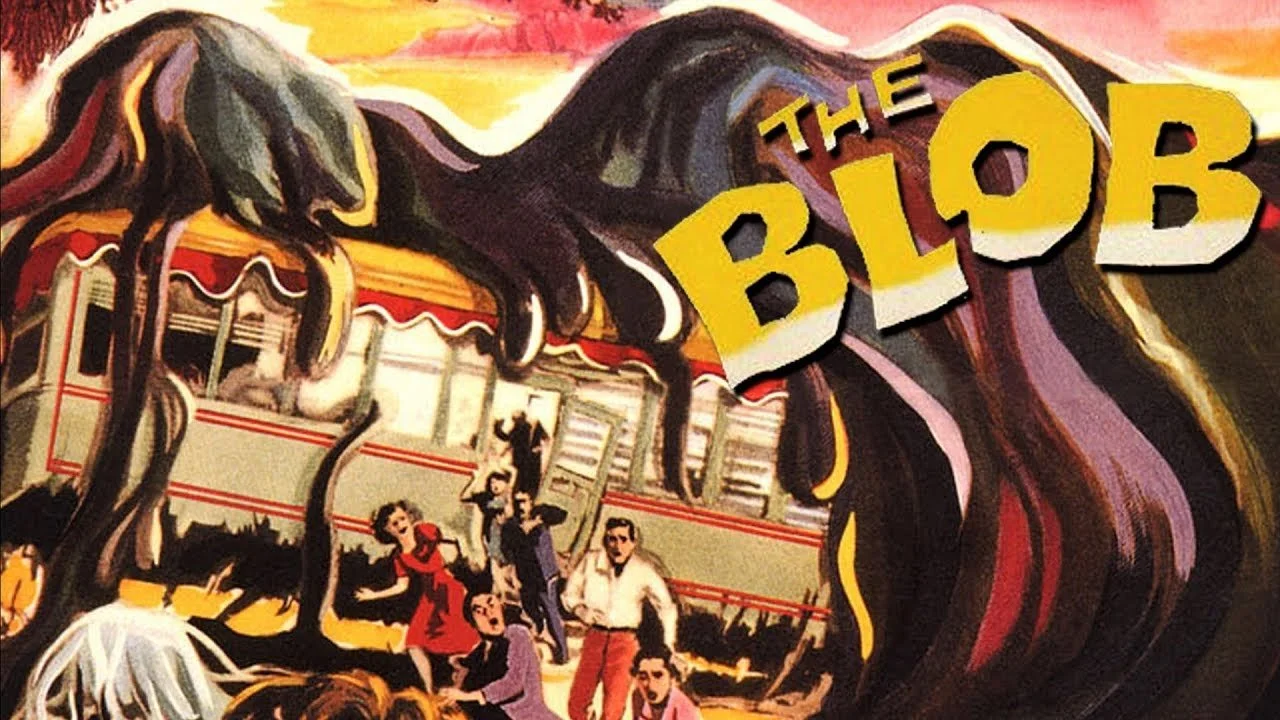The Blob (1958) – Criterion Collection Review
There’s something oddly refreshing about revisiting The Blob through the Criterion Collection. Seen today, it isn’t shocking in the way horror fans in 2025 might expect—there’s no gore to gawk at, no elaborate kills or hyper-stylized terror sequences, but that doesn't hold the Blob back at all. What it gives us instead is atmosphere, character, and a sense of creeping dread that was far more unnerving in its time than modern viewers might realize.
The period-piece setting is instantly immersive. Small-town America, with its local diner, movie theater, and tight-knit community, becomes the perfect stage for something so bizarre and alien. The film captures an era—its rhythms, its innocence, its anxieties—and that backdrop does as much work for the atmosphere as the monster itself. Criterion’s presentation only sharpens that effect, letting the colors, textures, and details really sing.
The characters are what ground it. Steve McQueen (as Steve) is magnetic here, even before his heroism fully manifests. His chemistry with Aneta Corsaut gives the story a warmth that makes you care when things begin to spiral. The supporting cast, too, carries surprising weight. I was particularly struck by Dave, the cop who feels more sympathetic and human than the genre usually affords, and by Danny, the little boy whose presence injects both charm and real stakes. The film could easily have played its characters as caricatures, but instead it leans into them as the pulse of the story.
And then there’s the setup for the climax. Without spoiling anything, what works so well is the way the film leans into hopelessness. The Blob seems unstoppable, indifferent, and utterly alien—an eater of worlds without malice, just inevitability. That sense of futility makes the final act land with much greater force. Steve, who by this point has emerged as the true center of the story, shows a cleverness and resilience that cements him as not just a protagonist, but a bona fide hero. His actions in the climax are satisfying in a way that feels earned, not contrived.
Do the effects still work? Surprisingly, yes. By modern standards, you can see the seams. But if you watch with the awareness of when this film was made, the ingenuity is striking. The Blob itself—unnerving in its shapelessness—feels less like a monster and more like an encroaching inevitability. That’s part of what makes it eerie: it isn’t a villain you can reason with, or even understand. It just consumes. And even now, decades later, the imagery lingers more than you might expect.
If I have a criticism, it’s only that I wanted more. The pacing is brisk, and I found myself wishing the film lingered longer with its characters and its situations. For all its atmosphere, I was enjoying my time in this small-town horror so much that I didn’t want it to end quite so soon.
At the end of the day, The Blob isn’t just a cult curiosity. It’s a genuinely atmospheric, character-driven piece of 1950s horror that earns its place in the Criterion Collection. It may not shock or terrify the way modern horror does, but its craftsmanship, performances, and eerie sense of inevitability still hold up. And if you give it the attention it deserves, you’ll find that it’s more than a relic—it’s a reminder that sometimes horror works best when it creeps, builds, and lingers.

